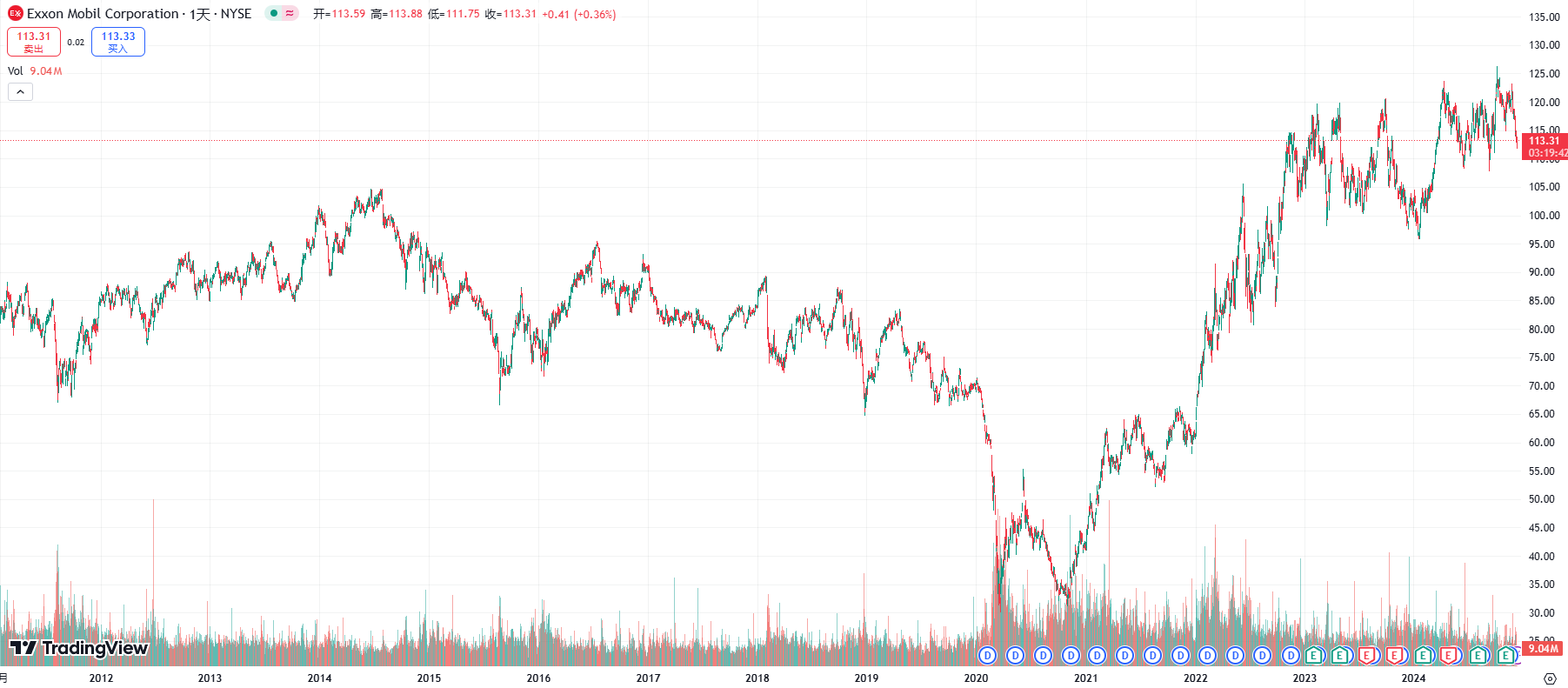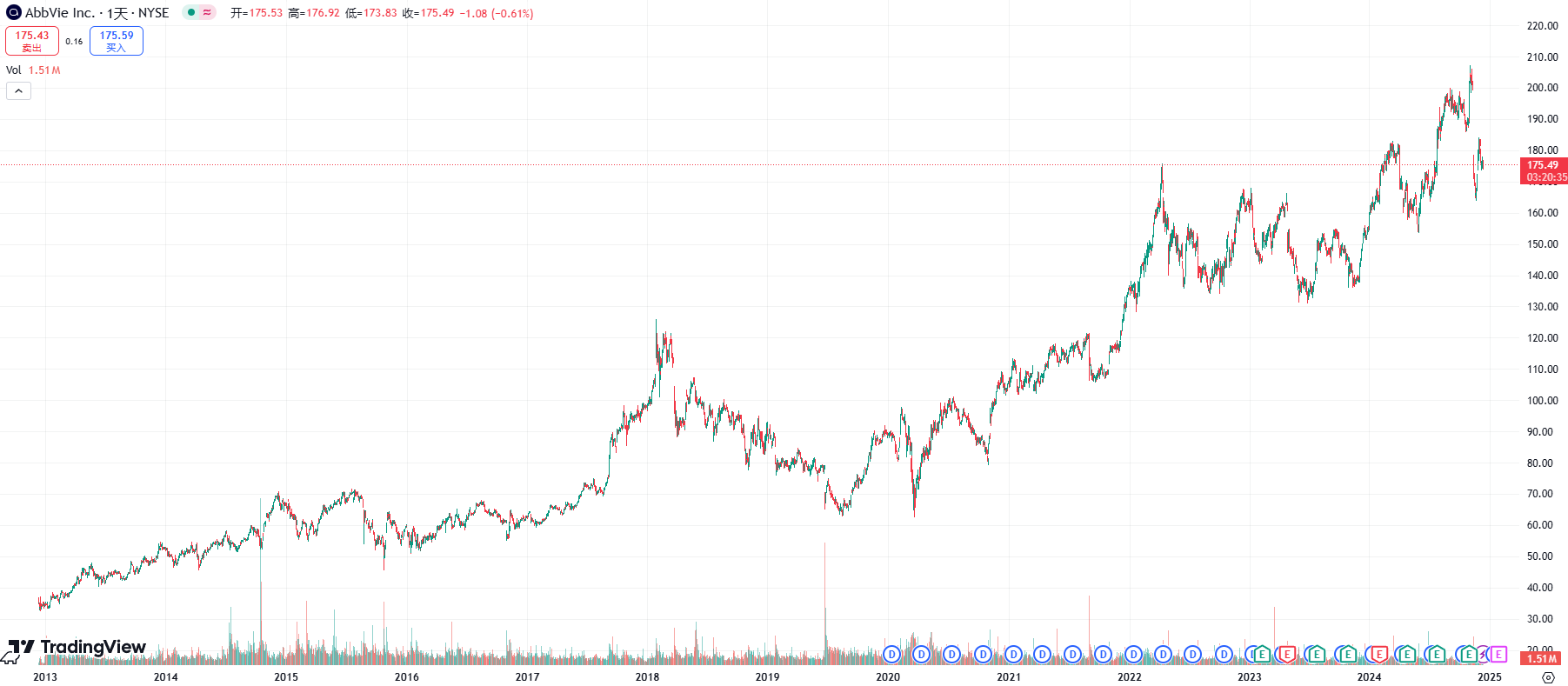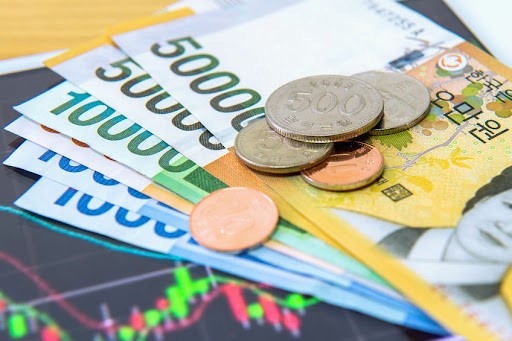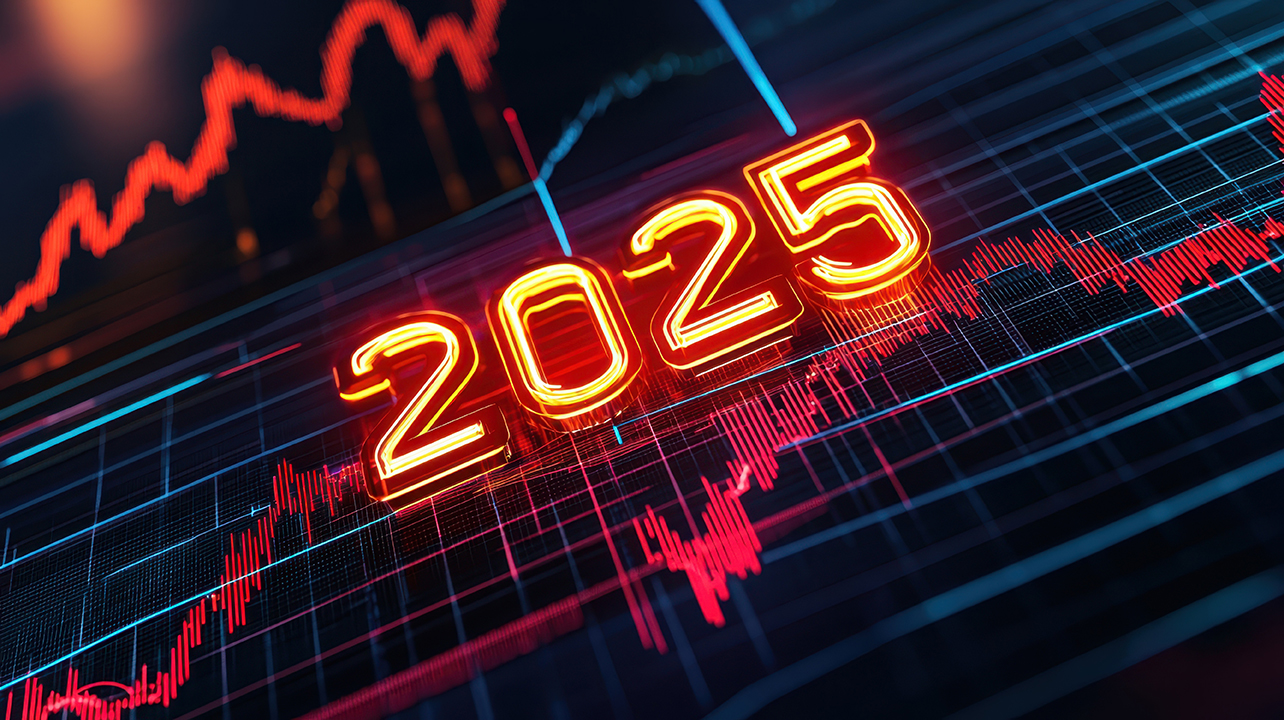市场资讯及洞察
.jpg)
量子计算:和平年代的“核武器”,以及赛道上的7大玩家
提到“核武器”,大家想到的是改变战争格局的终极威慑力;而在没有硝烟的和平年代,量子计算正成为新的“战略王牌”。
它不靠爆炸力,而是靠指数级算力重塑科技、经济、安全的底层逻辑。谁先掌握它,谁就能在新药研发、信息安全、新能源等领域抢占先机。
这是一场没有硝烟的“量子军备竞赛”,而谷歌、IONQ等公司,就是这场战争的主角。
一、为什么说量子计算是和平时期的“核武器”?
普通电脑像“单线程快递员”,一次只送一件包裹;
量子计算靠“量子比特分身术”,能同时处理海量信息——10个量子比特就能同时计算1024种状态。
这种差距,不是“快一点”,而是“维度不同”:就像骑自行车去追火箭。
它能干的事堪称“颠覆级”:
· 破解银行、互联网加密系统(别人算几百年,它几小时搞定)
· 模拟分子结构加速药物研发(几年缩成几个月)
· 优化交通、金融、能源系统(让全球效率更高)
所以,谁掌握量子计算,谁就能制定未来的技术规则和安全标准。这份话语权,正如核武器之于国家安全一样。
二、赛道上的7大玩家:谁在领跑?
1. 谷歌(GOOGL)——超导路线的“火箭选手”
谷歌是量子计算的顶流。
它的超导芯片“Willow”已经做到105个量子比特,速度比全球最快超算还快1.3万倍。
它能计算分子结构,加速新能源电池和抗癌药研发。
谷歌放话:5年内实现实用化应用。
短板也有:超导量子比特太“娇气”,要放在比南极还冷几百倍的环境里,目前还只能处理特定任务。但作为科技巨头,谷歌的资源和研发速度,让它仍是最有可能先造出“量子核武”的玩家。
2. IONQ——离子阱路线的“精密工匠”
IONQ用激光“抓住”带电原子作为量子比特,精度极高、错误率低。
它靠32个量子比特就宣称实现“量子优越性”,比谷歌还早一步。
现在专攻“量子纠错”,让运算更稳定,是迈向实用的关键。
缺点是难以扩展,加一个比特像往积木塔上叠块砖,容易影响整体。
但在科研模拟、精密计算等领域,它的“精准”优势明显,有望后来居上。
3. 霍尼韦尔(HON)——幕后“装备大佬”
霍尼韦尔虽然不出风头,但它的子公司Quantinuum是离子阱路线的中坚力量。
更重要的是,霍尼韦尔的激光器、制冷系统、测控设备,是全球量子实验室的标配。
它是量子领域的“军工厂”,不造火箭,但造发动机。
在未来的产业链中,它是所有玩家都离不开的“幕后功臣”。
4. QUBT——专做“量子安全”的锁匠
QUBT不做量子计算机,而是做防量子破解的安全加密。
它利用量子技术生成不可预测的密钥,给数据上“防量子锁”。
银行、政府机构已经在用它的产品。
未来量子计算能破解传统加密,而QUBT的锁正是抵御“量子黑客”的盾牌。
算是最贴近普通人生活、最早能变现的应用方向。
5. QBTS——“软件+硬件”的小众探索者
QBTS采用特殊的核磁共振技术,在常温环境下也能运行,不用极冷设备。
目前算力较弱,主要帮企业做物流规划、路线优化等小型任务。
虽然不是“超级计算怪兽”,但胜在灵活低成本,可能在特定场景率先落地。
6. Rigetti(RGTI)——被巨头甩开的追赶者
RGTI走超导路线,推出过80比特设备,但进展放缓。
现在主攻“量子云平台”,让企业租算力做实验。
只是面对谷歌、IBM的强势,它的技术差距越来越大,市场声音也逐渐变弱。
7. Laser Photonics(LAES)——“量子副业”的蹭热股
LAES主业是激光设备,量子只是“副业”。
偶尔宣布要搞“光量子技术”,但没有实际芯片或数据。
目前更像是“站在量子赛道边上的观察员”,未来潜力有待验证。
三、我们应该关注什么?
不能以为这只是科研人员的游戏。量子计算未来影响的是你我的生活:新药更快上市,电动车续航更高,网络支付更安全,物流更智能。
如果要关注投资方向或应用落地:
谷歌:技术最强、速度最快,五年内可能看到实用成果;
IONQ:纠错领先,科研和精密行业潜力大;
QUBT:防量子黑客的“安全护盾”,最贴近现实场景。
四、结语:量子“军备竞赛”才刚开始
量子计算不是“更快的电脑”,而是和平年代的核武器。它决定未来科技的主导权,也重塑国家竞争格局。
现在的玩家,有的快、有的稳、有的专,但真正的胜者,取决于谁能先跨过“纠错”和“可扩展”这两道坎。
十年后,你用的药、开的车、上的网,背后可能都有量子计算的力量。这场“无声的军备竞赛”,正在改变人类的未来。


热门话题
2025年世界格局依旧充满较高的不确定性,尤其是特朗普上任后,经济与政治的走向可能难以预测。但比较确定是事情是,降息。在低利率时代,经济政治情况高度不确定的情况下,高股息股票一般会受到机构资金的青睐,因为高股息股票相对于固定收益产品更具吸引力。在贸易战或经济增长缓慢期间,高股息股票可能表现较好,因为它们通常来自于那些具有稳定现金流的成熟公司,能够在经济不确定时期提供收入稳定性。

哪些股票的派息比较稳定,同时又是在某种程度上处于相对垄断地位呢?首先是埃克森美孚公司(Exxon Mobil Corporation),股票代码XOM.NYSE,这个股票推荐的理由是, 根据埃克森美孚2024年发布的《全球展望》,预计到2050年,全球能源需求将增长15%。埃克森美孚正积极推进低碳技术,包括碳捕集与封存、氢能和生物燃料等领域,以应对全球能源转型的挑战。中东局势混乱,石油价格有可能进一步上涨。该公司平均每年分红派息超过5%,非常稳定。其次是Verizon Communications Inc,股票代码VZ.NYSE,(威瑞森通信公司)是美国领先的电信和宽带服务提供商,业务涵盖无线通信、固定宽带和数字媒体等领域。推荐理由很多,首先是不管大家买什么手机,通讯公司就那几家,手机公司很多,经常更新迭代,移动通讯公司就那几家,基本是垄断的。2024年12月,Verizon宣布季度股息为每股67.75美分,年化股息收益率约为6.37%。当然,未来可能面临来自行业内其他几个巨头的竞争。包括AT&T,季度股息为每股0.28美元,年化股息总额为1.12美元。以当前股价计算,股息收益率约为4.77%。AT&T计划在未来三年内通过股息和股票回购向股东返还超过400亿美元。公司预计到2027年自由现金流将超过180亿美元。所以电讯行业,旱涝保收,大家可以关注。

除了公众必备的石油和通讯,还有医疗板块,生病或者日用必备的,比如艾伯维公司(AbbVie Inc.),专注于免疫学、肿瘤学、神经科学等领域的创新疗法。艾伯维在帕金森病治疗领域取得积极进展,其第三项III期试验取得成功,计划于2025年寻求FDA批准。不同于创新类医疗公司,他给分红比较稳定,股息率平均为4%。同样,强生公司(Johnson & Johnson,股票代码:JNJ),大家超市看到的,家用的护肤品等等,很多都是强生集团的,股息收益率约为3.19%。辉瑞大家肯定都听过,打疫苗的时候用到的,辉瑞提供高达5.78%的股息率。

股息率最高的,也是非常稳定的一家公司,离不开这家公司的产品的人群非常稳定,就是烟草公司。奥驰亚集团(Altria Group Inc.,股票代码:MO)股息率约8.4%,股息增长记录 连续54年。在2023年,奥驰亚的净营收为244.8亿美元,支付的股息总额为68亿美元。如果大家想安全的和公司一起成长,这一类现金流稳定的半垄断公司,非常值得在2025年考虑。

免责声明:GO Markets 分析师或外部发言人提供的信息基于其独立分析或个人经验。所表达的观点或交易风格仅代表其个人;并不代表 GO Markets 的观点或立场。联系方式:墨尔本 03 8658 0603悉尼 02 9188 0418中国地区(中文) 400 120 8537中国地区(英文) +248 4 671 903作者:Jacky Wang | GO Markets 亚洲投研部主管


热门话题
只用了12天,叙利亚反对派武装就转正了。周日,叛军攻入叙利亚首都大马士革,前总统阿萨德及其家人逃至俄罗斯,这标志着阿萨德家族在叙利亚约 50 年的统治结束,也标志着传至第二代的家族王朝终结。也标志着俄罗斯、伊朗在中东地区的影响力进一步被削弱。拜登把地缘政治玩弄的很出色。通过俄乌战争,消耗了俄罗斯的实力,通过以色列,制约阿拉伯国家和叙利亚,并在卸任前夕,影响了叙利亚局势,拜登并表示:我们的做法改变了中东的力量平衡。以色列趁机继续派兵前往占领的叙利亚领土戈兰高地(1967年战略叙利亚领土),并趁机对叙利亚进行轰炸,占领更多领土。

据说叛军在推进的时候,车上有大量的钞票,愿意投降的政府军或者加入叛军阵营的,都可以获得现金奖励。而叙利亚平均一个月的人均收入只有1000人民币一个月。所以,对于饱受战乱的国家和人民,和平进行政府更迭就是众望所归的事情。逃往俄罗斯寻求庇护的前总统巴沙尔是何许人也呢?他是继任父亲留下的总统位置,因为当时全国选举只有他一个名字可以投票。巴沙尔曾经是学医的,在西方留学,太太是一位出生在英国的时尚现代女性。随着政治主导地位的牢固确立,巴沙尔将注意力转向了国民经济。他放宽了进出口管制,允许外国投资者和银行进入该国,并鼓励私营企业的新创业精神。但是,内忧外患的日子一直存在。尤其是他亲近伊朗和俄罗斯,反对美国的态度,让美国和以色列非常不安。2011年的“阿拉伯之春”如野火般席卷整个中东地区。叙利亚也处在民主和专政的思想风暴下。内战由此爆发。而叙利亚政府军的战斗力很堪忧,主要靠盟友支持。普京要求控制叙利亚地中海沿岸的海军和空军基地,以换取战斗机驻扎。伊朗和真主党提供军事顾问、军队和武器,以换取利用叙利亚领土袭击以色列。而随着俄乌战争拉垮了俄罗斯的军事和经济,巴以停火,反政府武装找准时机,迅速出击。该反政府组织最初与伊斯兰国有联系,后来又与基地组织有联系。而在对方战略首都后,发布了中俄双语声明,确保中俄在叙利亚的居民受到保护。很明显,叙利亚的反政府武装,已经做好了长期经营叙利亚的战略。

对美国来说,美国在叙利亚驻军占领着东北部库尔德人控制的石油钻探区。未来可能会趁机推进其民主理念,让新的叙利亚政府尽可能拥抱西方政治体。同时,未来石油价格可能会进一步攀升,尤其是特朗普上台后,中东地区的石油可能会被进一步管制或限制出口,进而刺激美国本土石油开采,利于美国的制造业企业和石油大亨。战争是最可怕的,也是最应该避免的。叙利亚已经有数百万人流离失所,急需各类物资和援助。国内战争结束之后,叙利亚还要面临以色列的虎视眈眈,能否收回本国领土,也会是一个难题。弱国无外交。无论是中国还是澳洲,至少国家主权是完整的,我们珍惜现在美好的生活。在投资领域,石油相应的资产可以关注。中东局势已经出现新的变化,未来地域战争依旧有升级的可能性。特朗普在1月份入驻白宫后,希望能够履行承诺,让世界多一点和平。免责声明:GO Markets 分析师或外部发言人提供的信息基于其独立分析或个人经验。所表达的观点或交易风格仅代表其个人;并不代表 GO Markets 的观点或立场。联系方式:墨尔本 03 8658 0603悉尼 02 9188 0418中国地区(中文) 400 120 8537中国地区(英文) +248 4 671 903作者:Jacky Wang | GO Markets 亚洲投研部主管


热门话题
12月央行周来袭,携手美国最新CPI数据,以及PPI数据集体影响市场走向。上周五的非农数据十分稳健,降低了美联储对就业市场的压力,FedWatch给出12月超过80%的降息概率,基本令下周美联储降息25个基点板上钉钉,也能兑现鲍威尔此前说的今天降息100个点的前瞻。特朗普在接受采访时表示将继续让鲍威尔掌管美联储,并没有替换掉他的打算。本周澳联储利率决议预计继续保持原有利率不变,这也将使得澳大利亚今年无望实现首降,经济下行压力巨大,GDP增速已经不足1%,但澳大利亚CPI数据显示澳大利亚基本已经具备降息条件,今后若突然公布降息也不是意外,只是突然降息的话澳元或许会节节败退了。另外加拿大利率决议预计再降50个基点降利率上限压低至3.25%。瑞士央行利率决议预计再降25个基点调整利率至仅仅0.75%。欧元区存款利率预计下调25个基点至3%。美元指数成分国频频降息在下周美联储降息落地前将形成短暂的美元助推效果。另外国际局势方面依然未有明显好转。黎以停战形同虚设,叙利亚反政府军攻入大马士革推翻政权,令地缘政治风险加剧,也将推高黄金价格。乌克兰总理在同法国总统和未来美国总统特朗普会面后表示愿意开启对俄罗斯的停战谈判。[caption id="attachment_281699" align="alignnone" width="1364"]

周五美国非农数据公布后,纳指稳定上行,标普高开低走但依然收涨,道指小幅收跌,美股整体依旧强势,AI应用层热炒风头依旧,成为带动股指上行的关键。特斯拉再次涨超5%令股价接近$400,也即将兑现本人在特朗普当选后分析的股价短期冲上$400的预测。C3涨超8%终于回到$40美元平台,PLTR继续刷新高。本周甲骨文,Adobe和博通财报来袭,很有希望几句扩大AI应用层股票整体涨幅。预计2025年将会是AI应用股集体爆发的一年。[/caption]能源方面油价因欧佩克两面性政策持续被压低,核电板块分化加剧,国际铀价也再度逼近今年前低,美铀股表现不佳,但跌幅不大。美国核技术股大幅反弹,OKLO涨超9%,SMR和NNE都有明显回暖。特朗普交易继续发酵,特斯拉题材饱受追捧,SpaceX概念股DXYZ未来极度看好,周五股价收涨超过30%,并在盘后继续涨超8%。SpaceX完成首个直连手机卫星星座,并获得了五角大楼合同。比特币重回10万美元,Coinbase涨超7%,MSTR也有小幅上行。高盛,摩根大通以及富国银行等美国本土投行券商股继续稳定上涨。外汇方面澳元持续下行后有所反弹,澳美短期有望重回0.64,澳日跌破96大关,美日重回150平台。本周是央行周也是汇市行情大周,巨震在所难免。免责声明:GO Markets 分析师或外部发言人提供的信息基于其独立分析或个人经验。所表达的观点或交易风格仅代表其个人;并不代表 GO Markets 的观点或立场。联系方式:墨尔本 03 8658 0603悉尼 02 9188 0418中国地区(中文) 400 120 8537中国地区(英文) +248 4 671 903作者:Xavier Zhang | GO Markets 高级分析师


The "Santa Claus Rally" is a well-documented seasonal phenomenon in financial markets where stock prices often rise during a specific period at the end of the year. While widely discussed, it is frequently misunderstood or oversimplified. This article provides a detailed examination of the Santa Claus Rally, including what it is, why it happens, common misconceptions, its historical trends, and a close look at the factors influencing the markets in 2024.
What Is the Santa Claus Rally? The Santa Claus Rally refers to a pattern of stock market gains observed during the last five trading days of December and the first two trading days of January. This seven-day window, now an established market belief, was first identified by Yale Hirsch, who documented the Santa Claus Rally phenomenon in the 1972 edition of the Stock Trader’s Almanac.
It has since become one of the most recognized seasonal patterns in financial markets, has historically delivered positive returns across major indices, including the S&P 500 and Dow Jones Industrial Average. The phenomenon stands out because of its precise timing and consistent performance, making it distinct from broader year-end trends. Key Characteristics: Defined Timing: The rally occurs between December 26 and January 2, excluding earlier December market activity.
There is a common misconception that it may occur earlier we will discuss this later, Short-Term Nature: It is a brief but significant period, often viewed as a sentiment gauge for markets not only during but subsequent to this defined period. Predictive Potential: A strong or weak rally can sometimes hint at market behaviour in the early months of the new year. Why Does the Santa Claus Rally Happen?
The rally is driven by a combination of market psychology and market dynamics. While no single factor is definitive, the interplay of several influences creates favourable conditions for this pattern occurring. With these factors we will not only define each in turn but suggest the potential impact on such a rally.
Tax-Loss Harvesting Winds Down Definition: Tax-loss harvesting is when investors sell underperforming assets to offset capital gains, reducing their taxable income. Impact: This selling pressure, which weighs on markets earlier in December, subsides by the end of the month. With the selling completed, buying often resumes, pushing prices higher.
Holiday Cheer and Optimism The festive season fosters consumer and investor optimism. Strong holiday spending boosts confidence in consumer-driven sectors, and this optimism often spills over into the broader market. Investors may feel more inclined to take risks, leading to upward momentum in stock prices.
Institutional Repositioning Definition: Fund managers adjust portfolios at year-end to present favourable performance in annual reports. Impact: This often involves buying top-performing stocks, which adds upward pressure to the markets during the rally period. Low Trading Volumes Many institutional and retail investors take time off during the holidays, leading to lighter trading volumes.
In this environment, even modest buying activity can significantly impact prices. New Year Positioning As the year ends, investors reassess their portfolios, positioning for anticipated trends in the coming year. This activity often results in fresh buying, particularly in growth sectors.
Historical Performance relating to the Santa Claus Rally The Santa Claus Rally has proven to be a reliable phenomenon, delivering positive returns in most years. On average, the S&P 500 gains between 1% and 1.5% during this period. Historical Trends: The rally has produced gains in approximately 75% of years since it was first documented.
Its absence has occasionally been a precursor to weak market performance in January or even the full year. Key Examples: In 2008, amidst the global financial crisis, the Santa Claus Rally still materialized, providing a brief positive momentum during a challenging year. In 2015, the rally failed to occur, and markets experienced heightened volatility in January, highlighting its potential predictive significance.
Common Misconceptions about Santa Claus Rallies Despite its prominence, the Santa Claus Rally is often misunderstood. Some of the most common misconceptions include: Timing Confusion? Many believe the rally spans the entire month of December or starts before Christmas.
In reality, it is strictly confined to December 26–January 2. Any other December market move will be due to other market forces, Assumption of Guaranteed Gains? While historically frequent, the rally is not guaranteed.
External shocks or weak economic data can disrupt the pattern. Driven Solely by Retail Investors? A commonly held myth suggests that holiday bonuses or retail investor activity drives any such the rally.
In fact, as referenced above, institutional actions like window dressing and repositioning play a larger role. Overlap with Other Effects? Seasonal trends like the December Effect (general market strength in December) and the January Effect (small-cap outperformance in January) are distinct phenomena often conflated with the Santa Claus Rally.
Do we see a Santa Claus Rally Across World Markets? The Santa Claus Rally is most studied and reported for U.S. markets. While similar patterns may occur globally, their timing and drivers vary, but there is some evidence that may be of interest to those investing outside the US. 1.
European Markets United Kingdom (FTSE 100): The FTSE 100 has shown a tendency to perform well during the last week of December and the first week of January, much like the U.S. markets. A 2017 study by Schroders found that the FTSE 100 recorded positive returns in December approximately 78% of the time since 1986, with an average return of 2.4%. Germany (DAX): The DAX also tends to see year-end strength, reflecting broader European investor sentiment and repositioning similar to the U.S.
German equities benefit from strong consumer activity during the holiday season and institutional adjustments at year-end. 2. Asia-Pacific Markets Japan (Nikkei 225): The Nikkei 225 often experiences a "New Year Rally," which includes strong performance in the last few trading days of December and the first week of January. This trend is partially driven by institutional investors repositioning their portfolios for the new fiscal year (starting in April) and holiday optimism.
China (Shanghai Composite): While the Santa Claus Rally is less pronounced in Chinese markets, some evidence suggests a year-end rally occurs due to investor repositioning before the Lunar New Year (which falls between January and February). Australia (ASX 200): The Australian market often mirrors the Santa Claus Rally, with December being one of the best-performing months historically. Tax-related incentives also play a role, as Australia's fiscal year ends in June, leading to a broader seasonal trend than in the U.S.
Key Metrics to Watch Several indicators can help identify whether a Santa Claus Rally is likely or already underway, I have identified FIVE that may be particularly noteworthy: Market Sentiment Indicators Tools like the AAII Investor Sentiment Survey and the VIX (Volatility Index) reveal investor mood. Declining fear levels, as measured by the VIX, often support rally conditions. Sector Performance Growth-oriented sectors such as technology and consumer discretionary tend to lead during this period, reflecting holiday-driven optimism.
Trading Volume Trends Low volumes are typical during the holidays. However, any surge in buying activity can amplify upward price movements. Macroeconomic Data Economic indicators such as inflation figures or employment data can heavily influence sentiment.
Positive surprises may bolster the rally, while negative shocks could dampen it. Market Breadth A strong rally typically sees broad participation, with a high percentage of advancing stocks. Narrow gains driven by a few large caps indicate weaker underlying momentum.
What About This Year? As we approach the Santa Claus Rally period for 2024, several factors suggest potential market behaviour: Federal Reserve Actions The Fed has been gradually lowering interest rates, with the target range now at 4.5%–4.75%. While this policy supports market liquidity, concerns about persistent core inflation (hovering around 2.7%–2.8%) may lead to cautious policymaking in December.
Future rate cuts remain contingent on positive economic data. Market Performance The S&P 500 has seen year-to-date gains exceeding 27%, recently achieving record highs. This reflects robust investor confidence, with technology and consumer discretionary sectors leading the charge.
Strong earnings reports, such as Lululemon's 15.9% surge, underscore the strength of consumer-driven stocks. Economic Indicators Employment remains resilient, with November adding 227,000 jobs, though the unemployment rate has ticked up to 4.2%. This stabilization signals a soft landing for the economy.
Holiday retail sales projections are strong, if there are additional indications that his may be widespread, it may feed into positive reporting of Q4 earning due in January, this may continue the buoyancy of current market sentiment over the festive period, Geopolitical Factors Trade tensions, including potential new tariffs, introduce uncertainty. These policies could lead to inflationary pressures, dampening consumer spending. Any escalation in existing global conflicts, notably the Middle East situation may also obviously impact quickly and significantly on sentiment.
Investor Sentiment Despite high valuations, optimism remains buoyant, supported by historical patterns favouring December as a strong month for equities. However, caution is warranted given current market highs and the potential for market participants deciding valuations are high enough for right now. Summary The Santa Claus Rally remains a fascinating and historically consistent market phenomenon, driven by a mix of seasonal optimism, institutional actions, and economic conditions.
To stay on top of what is happening during this interesting period in markets may offer opportunity as well as inform risk management, For 2024, the stage appears set for a potential rally, with favourable monetary policy, strong market performance, and resilient economic indicators providing support. However, investors should monitor inflation trends, geopolitical developments, and market sentiment closely as the year draws to a close. Although primarily described in relation to US markets, there is evidence of similar phenomenon in other world markets which we have briefly referenced also.
Understanding the drivers and metrics of the Santa Claus Rally can help investors navigate this unique market period with confidence and insight.


热门话题
最近关注时事的朋友想必都目睹了韩国这场政治危机。韩国总统尹锡悦在10月3日晚间忽然宣布全国戒严,宣布要“肃清反国家势力”,这是自韩国1987年民主化转型以来首次由总统宣布戒严,并且还是在没有社会和政治动荡的和平时期。虽然仅6小时之后,总统被弹劾,被迫依国会决议解除戒严,但是这反映了韩国执政党和在野党的权力斗争已经达到极端程度,在总统府与政治丑闻关联的发酵下,政治的极化与军方的介入已经严重影响了民主制度和各项改革措施的推进。美国白宫当然第一时间表达关切,在全球化和政治联盟的背景下,韩国国内政治危机已经演变为国际焦点。

当然,我既不懂政治,也不敢妄议政治,但不妨大胆预测后面局势演变:整体上,大概率局势还是维持互相对峙,但不会全面升级,各方力量寻求微妙平衡点。但需要监控以下转折点:1.美国态度将影响危机走向,如果美国态度强硬,可能加速危机升级;2.政府与反对派的谈判进展,关系到本次危机是否能以表面上的和平化解;3.朝韩纷争的局势变化,会严重影响到韩国“攘外必先安内”的实施尺度。这次韩国政治动荡我们可能没有很强烈的感受,但却会影响金融市场波动从而影响我们的投资交易。

在韩国政局突变后,韩国金融市场出现明显的避险性抛售潮。从股市表现看,代表韩国市场的ETF基金大幅下挫,iShares MSCI韩国ETF单日跌超5%,创下近4个月以来最大单日跌幅。从市场结构来看,外资持仓比例较高的科技和出口导向型企业受冲击最明显。韩国作为全球最重要的半导体生产基地,控制约37%的10纳米以下的芯片生产,三星电子、海力士等龙头企业在伦敦市场的股价已经出现下跌。债市方面比股市反应更温和些,这与韩央行11月意外降息有关,但外资或理解为经济下行的被动降息而加速撤离韩国债市,从而推高韩国国债收益率。汇市方面,美元兑韩元飙到2年新高。从目前市场反应来看,在宣布戒严令之后,美元兑韩元一度升到1430,反映了当下市场对政局突变的即时反应和避险情绪的集中释放。相反日元、美元、瑞士法郎呈现避险特征被动升值。短期来看,韩元汇率仍面临下行压力,在局势彻底明朗化之前,市场避险情绪仍然浓厚,对黄金依旧是利好。区域市场方面呈现连锁反应,日韩之间紧密的供应链关系或对日本消费电子、半导体、汽车零部件等板块造成冲击,戒严事件发生后,日股和港股已经发生波动,国内北向资金出现净流出迹象,如果后续局势得不到有效缓解,可以采用超跌做空的对冲策略、或降低相关板块的风险敞口来回避过大风险。但需要特别注意的是,本次戒严事件引发的恐慌性抛售,主要源于市场情绪,而非基本面的恶化,尤其是一些优质企业,可能反而是阶段性补仓机会,随着局势不断明朗,超跌修复的可能性也会比较大。免责声明:GO Markets 分析师或外部发言人提供的信息基于其独立分析或个人经验。所表达的观点或交易风格仅代表其个人;并不代表 GO Markets 的观点或立场。联系方式:墨尔本 03 8658 0603悉尼 02 9188 0418中国地区(中文) 400 120 8537中国地区(英文) +248 4 671 903作者:Christine Li | GO Markets 墨尔本中文部


With 2024 fast approaching its conclusion we thought it best to have a really good deep dive into where the Australian economy sits and therefore where the opportunities and risks are for 2025. It's pretty clear that things are soft to say the least but there are signs the household is stirring. Government spending is remaining elevated, inflation is moderating but growth is poor.
So let's dig into the data that matters The Consumer Retail sales saw a solid lift in October 2024, growing by 0.6% month on month (MoM) and 3.4% year on year (YoY)—the strongest annual growth since May 2023 and that is before we see the full picture of Black Friday sales which are on track for a record print with estimates as high as $7.2 billion for the period. This improvement indicates that consumers are starting to spend some of the Stage 3 tax cuts introduced in mid-2024. We should point out that a significant portion of the Stage 3 tax relief appears to be going into savings rather than immediate consumption.
Household deposits surged by 8.3% YoY reinforcing the notion that Australians are prioritising financial security over spending. This has been reinforced by the latest GDP figures – more on that later However what’s also telling heading into the end of the year is consumer sentiment has rebounded although modestly. We will say it's not a high bar as consumer sentiment was at levels not seen since the pandemic.
But it is picking up and that must be seen as a positive. Wage growth appears to be slowing, a weaker signal despite continued strength in employment figures. All this creates a mixed picture of the consumer for 2025.
We expect a gradual recovery in spending as rate cuts are likely in 2025, the full effect of the Stage 3 tax cuts hit full levels ($23 billion to be exact which is about 0.8% of GDP) and the Federal Government gives out more handouts with an election at hand. This is likely to support consumption over the full year however it’s not going to create an immediate boom. We will be monitoring consumer staples and discretionary sectors for signs of movement in the early part of the second quarter.
The Private Side of credit Private credit growth continues to surprise on the upside, something that is likely to keep the RBA up at night. October’s 0.6% MoM increase was above expectations and that led to YoY growth being up a staggering 6.1%—the fastest rate since May 2023 and this after 13 rates over the previous year. This growth is mainly down to housing and overall credit growth picking up significantly.
However, credit growth appears to be nearing its peak, likely to plateau around 6.5% y/y in the coming months. Several factors signal moderation ahead: Business Investment: Surveys show a downgrade in capital expenditure intentions. Home Loans: Demand is likely to stabilise as dwelling price growth flattens.
But the RBA cutting rates may change the trajectory later in the year Personal Credit: Slowing household borrowing suggests cautious consumption and a switch back to savings which manifested in Household deposits growing by 1.3% MoM in October seeing the annual growth in savings to 8.3%strongest pace since mid-2022. Housing Market Shows Signs of Cooling Dwelling prices are clearly losing momentum. November prices edged up just 0.1% MoM—the weakest monthly gain since January 2023—while annual growth moderated to 5.5%, the slowest since September 2023.
The number of dwelling sales also weakened sharply, though some of this reflects temporary reporting distortions. Any sort of recovery is projected only after the RBA begins cutting rates, which again is likely to be in the latter half of 2025. This cooling trend aligns with broader economic signals of moderation in housing demand.
This is a problem for the Bank and REIT sectors. The multiples in these two sectors are at historically high levels. The fundamentals backing banks in particular are starting to look shaky as loan growth is stagnant and house prices are falling in 2025.
Will the bank lead recovery continue next year? That is our question for the market. The Economy and all the rest GDP – is faltering there is no doubt about that now.
Figures to the end of September showed, Australia’s real GDP expanded by just 0.3% QoQ and 0.8% YoY well below the consensus 0.4% and 1.1% expected. This is a materially disappointing outcome and has triggered a new cyclical low, not seen (excluding the pandemic) since December 1991. The questions from the GDP figures are vast and need to be unpacked.
Any recovery in subsequent forward quarters is expected to be modest. As we discussed earlier, households and businesses are grappling with structurally higher cost bases, the need for increased savings and a peak in credit - this cannot be fully offset by potential easing of monetary policy. The RBA has a forecast 1.5% YoY for the final quarter of 2024.
Achieving this would require a significant 0.8% QoQ expansion, which seems increasingly unlikely given current economic dynamics and even if we take into consideration the Black Friday sales. A miss on this target could force the RBA to revise down its short-term growth outlook. Key Drivers Behind Weak Economic Performance on the Headline.
Household Sector Strains: The household sector remains weak, with aggregate spending declining slightly in Q3. Rising costs and weak income growth are pressuring budgets, curbing consumption, and keeping the sector in a vulnerable state. Contributed 0.0% in the quarter.
Business Investment Slows: Business investment softened further, reflecting heightened caution amid economic uncertainty and higher operating costs and tight labour markets in areas of need. All saw 0.0% contribution in the quarter Surprising Uptick in Dwelling Investment: Dwelling investment provided an unexpected positive contribution, rebounding slightly from a weak base. However, this increase is unlikely to represent a sustained trend given broader headwinds in the housing market.
Public Sector Reliance: Countercyclical public demand was the sole driver of growth, accounting for all the economic expansion in Q3 and the past year. Think about that – the only reason Australia didn’t have a negative quarter was from government spending. While this has supported the labour market and provided a buffer to broader weakness, over-reliance on public spending raises major sustainability concerns.
Per Capita recession and Productivity Woes GDP Per Capita Declines: The headline GDP numbers mask a persistent decline in per capita growth. Q3 marked the seventh consecutive quarter of contraction, leaving GDP per capita 2.2% below its Q2 2022 level, that is a horrible story. Productivity Drag: Productivity remains a significant weak spot, further undermining economic resilience.
Falling terms of trade have compounded this issue, leading to a marked drop in living standards. Real net national disposable income per capita has declined in five of the last six quarters, echoing the negative income shock seen during past terms-of-trade retracements. Compensation Pressures: Weak productivity has translated into falling compensation for employees, which in turn is easing unit labour cost pressures.
However, this decline in compensation is exacerbating household financial challenges, limiting their ability to support growth through spending. Where does this leave the RBA? The RBA faces a complex balancing act.
Weak economic growth underscores the need for interest rate cuts to support demand. However, persistently high inflation keeps the central bank in a cautious stance, limiting its room to manoeuvre. Additionally, the labour market remains tight, partly due to public sector demand, which inadvertently keeps inflationary pressures elevated.
This dynamic complicates the RBA’s ability to deliver meaningful monetary easing in the near term. So where does this leave markets for 2025? Structural Growth Concerns The Australian economy remains heavily reliant on two unsustainable drivers: Public Sector Spending: While critical in the current environment, excessive dependence on government expenditure highlights a lack of private sector dynamism.
Population Growth: Expanding population numbers are bolstering headline GDP but masking underlying weaknesses in per capita terms. Without addressing these structural imbalances, along with improving productivity, achieving robust and sustainable economic growth will remain elusive. We are therefore mindful of sectors that have run ahead.
The ASX 200 has just printed 4 record all-time highs in the past 8 trading days. Momentum indicators are running hot and overbought signals are flashing. Couple this with the economy falling into the end of the year. 2025 is likely to be a story or two – a recalibration in the first half – followed by a recharge in the second half.
With geopolitics thrown in and other issues. Volatility is likely to be back with a vengeance in 2025.

